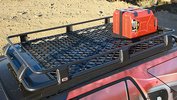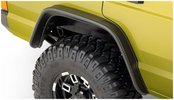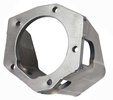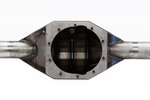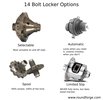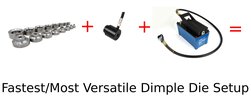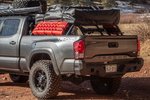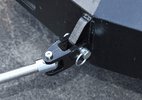Why You Shouldn't Use Chain for Off Road Recovery
You might think that chain is a natural part of your off road recovery kit. After all, it's heavy and it's metal.
But no:
For most of us, chain is the worst choice in off road recovery for towing and attaching. Because it's heavy. And metal.
In this article we'll take a look at why you shouldn't use chain, when you should use it, and what kind you should buy.
- 6 Reasons Tow Straps with Hooks Will Kill You
- The Winch Recovery Kit Comparison Guide
- All About Winch Cable
- Using your Hi-Lift jack as a winch: Using a chain will allow you to "walk" the Hi-Lift along the chain. With a Hi-Lift winch kit, this prevents you from having to secure your 4x4 in place (good luck!) and reset the jack. The only way to do this is with a length of chain.
- Highly abrasive environments: Chain will hold up much better to dragging and abrasion than any strap.
- Wrapping broken stuff: You can wrap chain, duct tape, or straps around things like broken suspension mounts to get you off the trail.
- Linking your frame to axle for lifting: A small chain is well suited for joining your axle and frame when you need to lift a tire off the ground and you have a flexy suspension.
5 Reasons You Should Skip the Chain
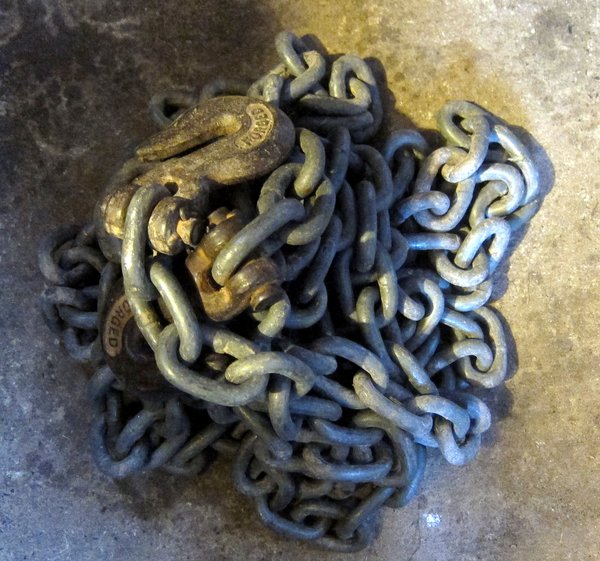
Chain often seems like a natural fit for off road recovery. It's big, heavy, metal, often cheap, and you probably have some laying around. Or you can find it cheap at a yard sale or flea market.
But not so fast:
Do you know anything about chain? Do you know about chain grades and breaking strengths?
1. You don't know when it breaks
First of all, chain has working load limits.
Working Load Limit (WLL) is the maximum weight that you ever want to put on the chain. For most 4x4s doing recovery, you should be using at least 3/8" Grade 80 Alloy chain.
Why?
Because 4x4s are heavy! Think about your rig: First, the GVWR is a pretty good indicator of weight for a lot of off roaders.
If you compare your dry, unloaded vehicle weight and then your GVWR you'll find out that your 4x4 probably only has about 800-1200 lbs of capacity before you're over the GVWR. You can easily hit that with bigger tires, a winch, skidplates, bumpers, cages, passengers, fuel, tools, and spare parts.
In a recovery situation your recovery gear feels the burn: getting stuck in mud, high-centered on a rock, or going uphill drastically increases the forces on your gear.
You need to be able to depend on your gear.
| Chain Size | Grade 30 WLL | Grade 43 WLL | Grade 70 WLL | Grade 80 WLL | Grade 100 WLL |
|---|---|---|---|---|---|
| 1/4" | 1,300 lbs | 2,600 lbs | 3,150 lbs | ||
| 5/16" | 1,900 lbs | 3,900 lbs | 4,700 lbs | 4,500 lbs | |
| 3/8" | 2,650 lbs | 5,400 lbs | 6,600 lbs | 7,100 lbs | 8,800 lbs |
| 1/2" | 4,500 lbs | 9,200 lbs | 11,300 lbs | 12,000 lbs | 15,000 lbs |
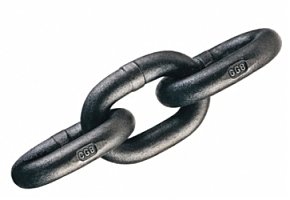
Some chains are marked every links or every few links. The number 8 or 80 usually denotes the grade, but it's always better to check with the manufacturer if you don't know.
But you know what?
Most people know nothing about their chain. We've collected probably 20 different lengths of chain over the years from 5/16" to 1/2". Some is short and some is long. Some has hooks, and some has large links.
And that's about all we know about it.
We don't know what the grades are on any of these chains or at what point they'll break. And for that reason, we can't ever use them in a serious recovery operation.
You see, there are many different grades of chain, but a lot of chain isn't marked.
Some reputable manufactures mark their chain at every link, or every six or every 15 - but a lot of manufacturers don't.
If you can't accurately determine the grade of chain you have, you should not use it for off road recovery.
2. Chains aren't elastic
This is a biggy!
True recovery straps are nylon. Nylon stretches up to 20% of its length during recovery.
Do you know how much chain will stretch? Basically, not at all. If you do stretch it, it means that you're putting it into failure mode.
So why do you want stretch during recovery?
Stretchiness allows kinetic energy from the towing vehicle to be stored in the strap. When the strap runs out of stretch, the energy is gradually transferred to the stuck vehicle. Stretchiness means that more energy can be transferred to get your stuck 4x4 out of the mud.
It's also more gentle.
Think about a bungee jumper jumping off a 300 foot tall tower. The bungee strap stretches as they reach the bottom and the jumper never feels a harsh jerk.
If that bungee jumper was using a chain, they'd die from being jerked to a sudden stop. Their guts would smash together against their bones and muscles and turn to mush.
Now:
In 4x4 recovery, you probably aren't going to die from a hard snatch pull, but think about the effect on your rig, you, and your passengers. With a chain, snatching force is transferred instantaneously from the towing vehicle to the stuck vehicle - not a comfortable sensation.
3. You can't securely fasten chain hooks
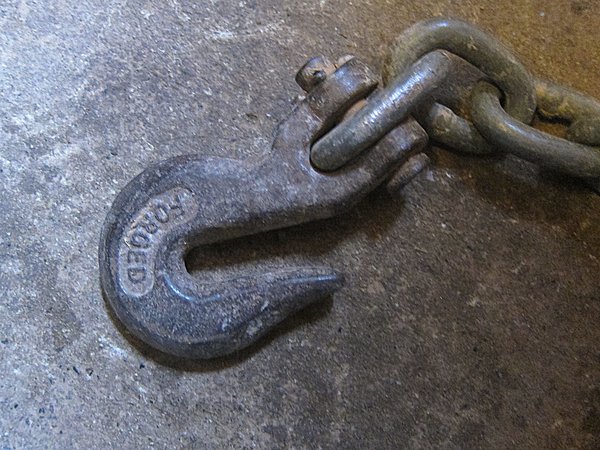
The most common type of hook for off road recovery chain is the clevis hook. It's ideal for hooking the chain back on itself and won't travel along the chain like a slip hook.
But the clevis hook is often finicky.
It has no positive locking mechanism, like a gate, that'll keep your chain in place.
It can easily slip off the chain while you're using it. We use it chain for dragging downed trees and logs, and often find that it takes some care to "set" the chain. This way when you're pulling the chain taught, the slack is taken up in a way that prevents the chain from unhooking. A little tricky sometimes.
And it gets worse:
People die when using tow hooks with straps because the hook slips off and rockets into someones skull.
You should be 100% against tow straps with hooks.
Off road recovery can get a little crazy sometimes and using something that doesn't provide a 100% secure connection should not be used in recovery.
4. Chain is heavy
| Chain Size | Weight |
|---|---|
| 5/16" | 0.94 lbs/ft |
| 3/8" | 1.47 lbs/ft |
| 1/2" | 2.48 lbs/ft |
Do you really want to lug around 30 feet of 3/8" chain? You better have a good reason.
It's ridiculously heavy.
If you want a good goal for yourself, it's putting your big fat 4x4 on a diet. Heavy rigs break more, get worse gas mileage, and are harder to extract in a recovery operation.
Have a hardtop on your Jeep? Try taking it off. There is a noticeable change, even though your hardtop doesn't weight that much.
Unless you need it, chain only makes weight gain worse. Take a look at chain versus recovery straps:
| Length | Type | Weight |
|---|---|---|
| 20 ft | 3/8" Chain | 29.4 lbs |
| 30 ft | 3/8" Chain | 44.1 lbs |
| 20 ft | 2 3/8" Nylon Strap | 3.9 lbs |
| 30 ft | 2 3/8" Nylon Strap | 5.8 lbs |
Holy moly!
If you use a recovery strap instead of a recovery chain, you can save about 38 pounds!
5. Good chain is expensive
At the time of this writing, for bulk 3/8" Grade 80 chain, you'll pay between $5-6 per foot.
A high end recovery strap doesn't cost anywhere near that. The most expensive nylon recovery straps run around $2/foot.
So for a 30 foot chain, you're looking at $150! For a 30 foot recovery strap, you're only looking at $60.
When You CAN Use Chain
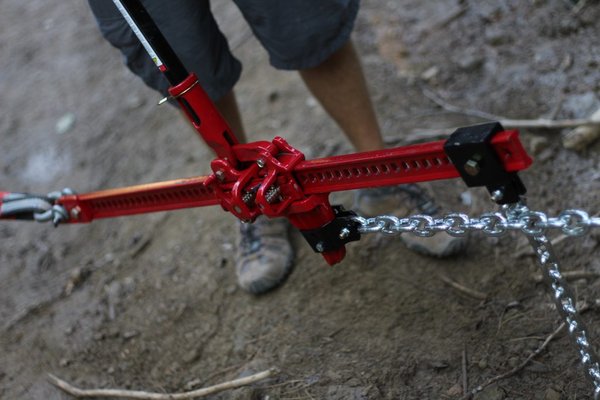
The nose attachment takes the load and attaches to the travel chain during this phase in the winch cycle. The winch tensioner hangs since it's not in use in this phase. A polyester strap attaches to a shackle, then the top clamp clevis.
You're fine using chain for certain things, but there are very few situations where we think you really need it:
You'll notice for the last two that the grade of chain probably won't matter to much as long as it can support the required weight.
Last updated: September 5, 2019
